
Stihl TS 420
The TS 420 is so popular, it could possibly be called “the standard” to which other cut-off machines are compared. Users like it because it is compact, lightweight, reliable and proves itself day in and day out, all day long. The TS 420 features all the high-performance features of the TS 410 – including an X2 air filtration system for a clean and smooth-running engine and virtually maintenance-free filters. With the added benefit of a 14” cutting wheel, it will handle cuts up to 4.9 inches in depth. This cut-off machine backs up its larger cutting capacity with a ton of usability features.
NOTE: Abrasive wheel included. Diamond wheel (shown) sold separately.
|
2-stroke engine with stratified charge. A fuel-free layer of air is created between the burned charge in the combustion chamber and the fresh charge in the crankcase, reducing the amount of fuel lost during the charge cycle. This results in more power with a lower weight, up to 20% lower fuel consumption than regular 2-stroke engines and significantly reduced exhaust emissions. |
|
STIHL long-life air filtration systems with pre-separation achieve perceptibly longer filter life compared with conventional filter systems. Air drawn in is swirled. The larger, heavier particles are ejected. The pre-cleaned air is routed to the air filter via the pre-separator duct. |
|
Intense vibration at the handles of power tools can lead to long-term effects on blood vessels in the hands and arms. STIHL has therefore developed an effective anti-vibration system whereby the oscillations from the machine's engine are dampened which significantly reduces vibrations at the handles. |
|
Light, consistent re-tensioning increases the service life of the belts and shaft bearings. |
|
The decompression valve allows some of the compression pressure in the cylinder to escape, so less force on the starter rope is needed. |
|
This controller in the carburettor prevents the fuel-air mixture getting richer as the air filter becomes clogged. The correct quantity of fuel is delivered to the carburettor depending on the quantity of air passing through the air filter. This keeps the fuel/air ratio in the combustion mixture constant and hence also the engine power. The filter doesn't need to be cleaned until an appreciable drop in power occurs.
|
Documents


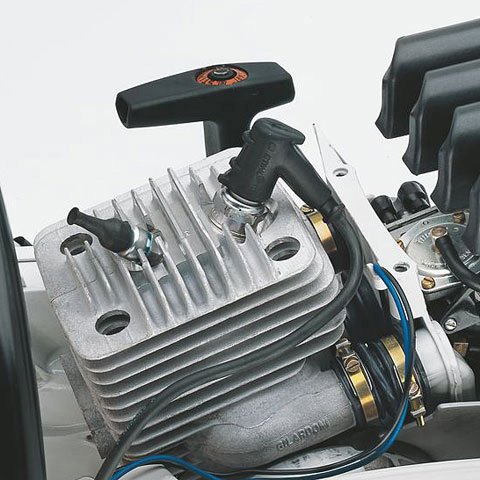 Reduced-emission engine technology
Reduced-emission engine technology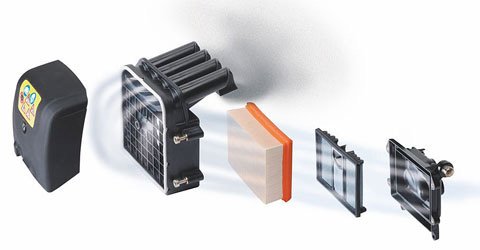 Pre-separation air filtration system
Pre-separation air filtration system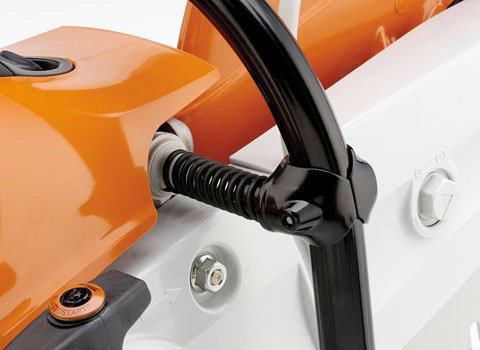 Anti-vibration system
Anti-vibration system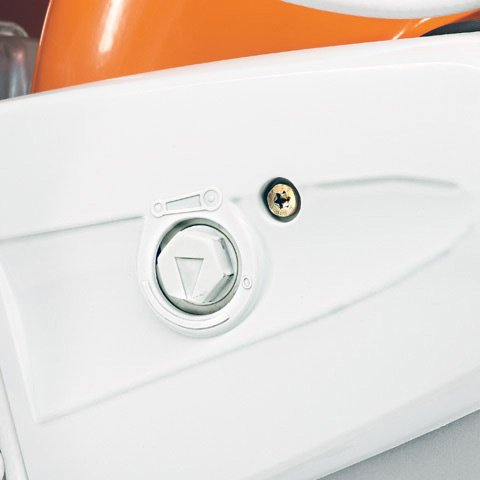 Semi automatic V-belt tensioning
Semi automatic V-belt tensioning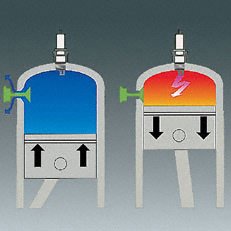 Decompression valve
Decompression valve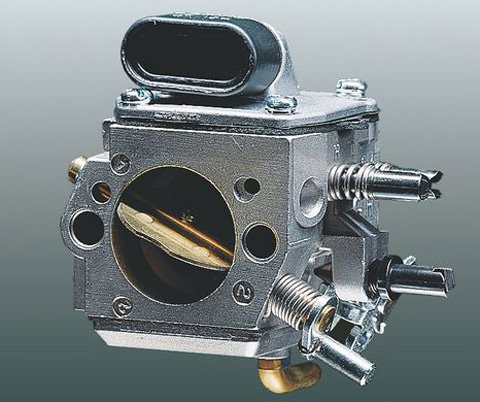 Compensator
Compensator











